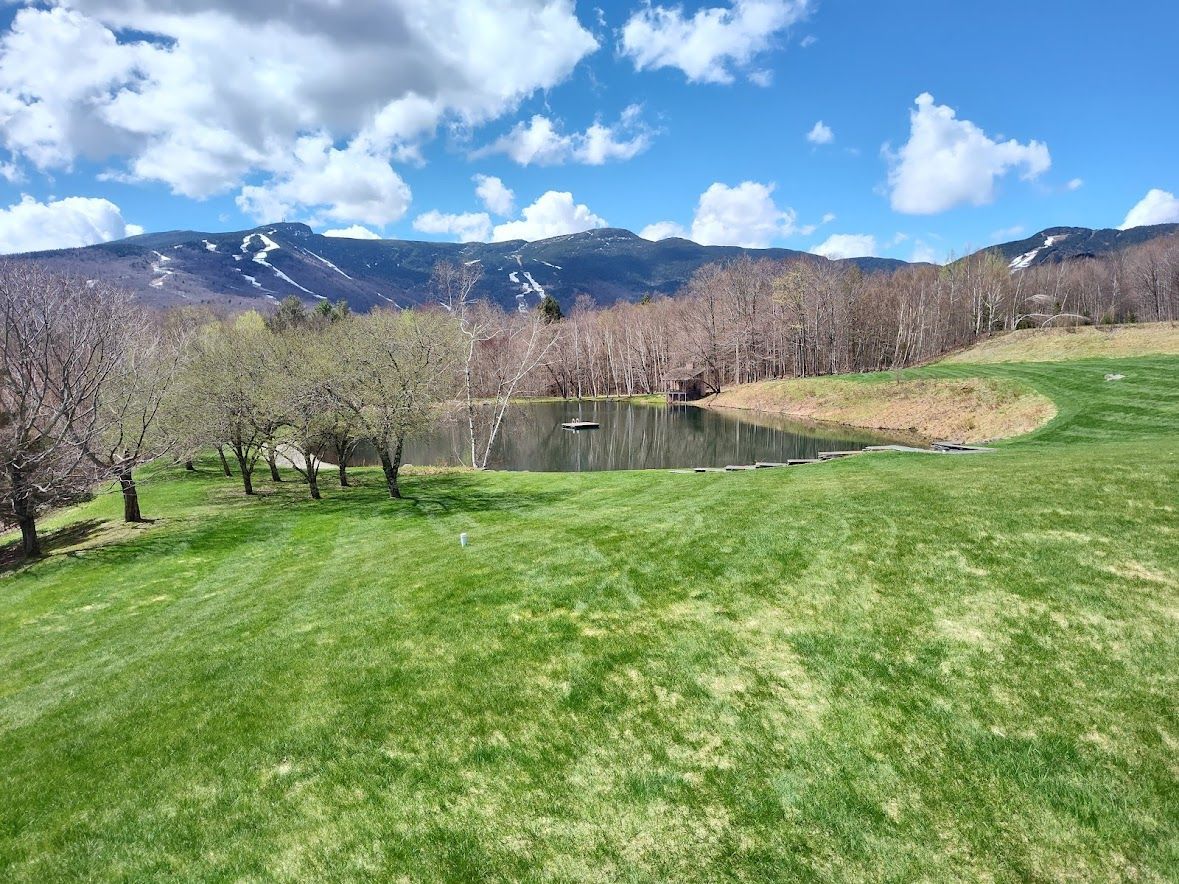Vermont Pond Restoration
Vermont Limnology
Pond experts restoring your neglected garden pond
Fishing for a way to restore your old pond and its water quality?
Restore health, restore depth, and restore water quality with full pond restoration
Lake control of your pond dreams today!
Healthy VT Pond Restoration
Your pond isn't just a body of water; from the soil, and clay up, it’s a living, breathing ecosystem that, when properly managed, can become a sanctuary for wildlife and a centerpiece of natural beauty on your property. Not all unhealthy ponds require true construction to bring them back to life, save money and look into pond dredging. With low-impact suctioning, you can revive your pond without serious impact on the vegetation and wildlife in and around it as well as the landscape. Suction dredging is an efficient and environmentally friendly technique for pond restoration, vacuuming out the sediment and organic debris that have accumulated in your pond over time. This build-up if left untouched, can lead significantly reduce water depth, cause cloudy water, low oxygen levels and excessive nutrients that can lead to algae blooms disrupting your pond's natural balance.
Low Impact Garden Pond Restoration through vacuuming
Restoring your old pond and its sediment back to its original beauty
Through shallow areas and deep water alike, we can carefully remove excessive buildup along the pond bottom through low-impact suction dredging without damaging the surrounding ecosystem. With sediment removal and thinning of excessive plant growth, we can revive your pond's health. With this process, we can carefully go around established aquatic plants, leaving plant growth and fish beds unphased
Restore your old pond from the silt to the surface
Low-impact pond suctioning, often called “pond vacuuming” or “pond dredging,” is a process used to remove sludge, debris, algae, weeds and sediment from the bottom of ponds or other small bodies of water. This technique is a gentle alternative to traditional dredging and is often used to improve water quality, maintain pond health, and enhance habitat for fish and aquatic plants. Here are the basics of how it works
Purpose and Benefits Of Essential Sediment Removal
01
Reduce Organic Sludge
Organic material, like decomposing weeds, leaves and algae, creates sludge at the pond’s bottom. Removing this layer helps improve water clarity and reduce odors.
02
Eliminate prime habitat for insects to reproduce
Various types of bugs like mosquitoes, thrive in low water levels with murky water to hide in. Clear your pondswater quality up and eliminate these environments
03
Minimizes Algal Blooms
Nutrients in pond sediment fuel algae blooms, so suctioning helps reduce algae proliferation.
04
Improves Fish Health
Removing debris from your pond improves oxygen levels, reducing stress on fish and your aeration systems.
05
Prevent Toxic Gases in your Pond
Decomposition in sludge can release gases like hydrogen sulfide, harmful to aquatic life; removing pond sludge helps prevent this. this quality here

How Pond Suctioning Works
No Need for Chemicals and avoid draining your pond!
- Vacuum Technology: A specialized vacuum (similar to a shop vac but more powerful and water-safe) is used to suck up sludge and sediment from the pond bottom. The suction tool has hoses and attachments designed for underwater use.
- Low Impact: Unlike traditional dredging, which may involve heavy machinery and disrupt the entire pond, pond vacuuming is gentle and usually doesn’t disturb the pond’s ecology or harm aquatic life.
- Filtration: Pump systems filter and return the water to the pond, reducing water loss.
Equipment
Pumps and Filtration
Pond Vacuum or Dredger: These can range from small, manual pond vacuums to larger, motorized units for bigger ponds.
Hose and Attachments: Suction hoses and nozzles reach into crevices, edges, and plant beds throughout your pond.
Filtration System: These pumps often have filtration systems to trap debris, separate it, and allow clean water to return to the pond.
When and how often do you need this Muck Management
for your
pond?
Depending on the habitat around your pond, at the surface, things could look fine, but there are some good indicators you could use some help, especially in shallow areas of your pond, regardless of pond size. If there are heavy trees and vegetation seasonal cleaning may be necessary to maintain your old ponds health
Seasonal Cleaning: Many pond owners opt for a dredge or suctioning once or twice a year, ideally in early spring and late fall, to control muck and debris build-up, especially in shallow water.
After Heavy Debris Falls: Suctioning can be beneficial after events that add a lot of material to the pond, like storms or seasonal leaf fall.
Environmental Considerations to Vegetation and Wildlife
Low-impact suctioning respects the pond's ecosystem, preserving beneficial bacteria and minimizing the risk of disturbing fish, plants, and other aquatic organisms throughout deep and shallow water.
Proper disposal of the removed plants and sediment is important to avoid nutrient runoff back into the pond.
Using low-impact pond suctioning is an effective way to keep small to medium ponds clean without harming the natural environment, making it popular for ponds in residential or park settings. Your old ponds murky water quality does not have to be a struggle any longer, Bring life back to your garden pond today and pump out that muck without harming the birds, fish, frogs and plants and restore your ponds depth!
